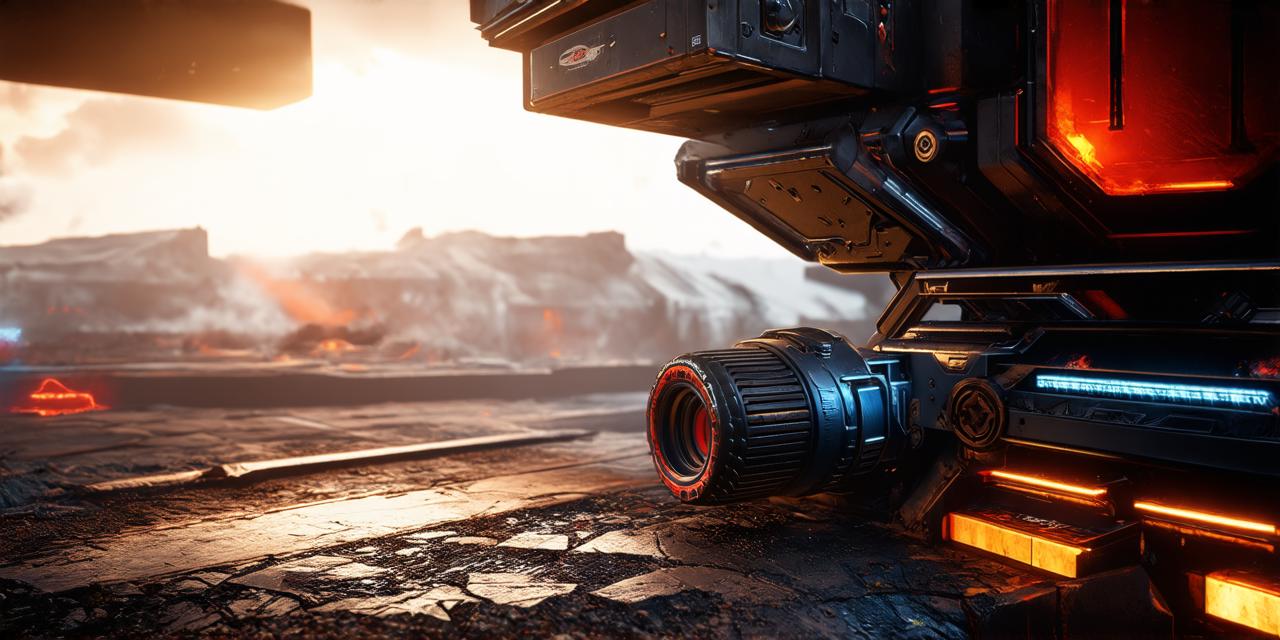Introduction
Unreal Engine (UE) is one of the most powerful and popular game engines used by developers worldwide. It offers an extensive range of tools, features, and plugins for creating immersive games across multiple platforms. In this comprehensive guide, we will explore the various aspects of UE, including its architecture, key features, workflow, and best practices for game development.
Unreal Engine Architecture
Unreal Engine is built on a modular architecture that allows developers to customize and extend the platform to meet their specific needs. The core components of UE include:
- Scene Composition: This component enables developers to create 3D scenes, objects, and characters using various tools such as modeling, texturing, animation, and lighting.
- Physics Simulation: UE provides a powerful physics simulation system that allows developers to simulate real-world physics in their games, including gravity, collision detection, and rigidbody dynamics.
- Scripting: UE supports multiple scripting languages, including Blueprints, C++, and Unreal Script, which enables developers to create complex game logic and behavior using visual or code-based programming.
- Networking: UE provides a robust networking system that allows developers to build multiplayer games with support for various networking architectures such as client-server, peer-to-peer, and dedicated server.
- Audio and Animation: UE includes built-in tools for creating and managing audio and animation content, including support for 3D audio, motion capture, and animation graphs.
Key Features of Unreal Engine
Unreal Engine offers a wide range of features that make it an ideal platform for game development. Here are some of the key features:
Realistic Graphics and Rendering
UE uses state-of-the-art rendering techniques, including physically-based rendering (PBR), to deliver realistic graphics with high-quality textures, lighting, and shadows. PBR enables developers to create visually stunning games that look and feel like the real world.
Dynamic Lighting and Weather Systems
UE includes dynamic lighting and weather systems that allow developers to simulate real-world lighting conditions and weather patterns in their games. These features enable developers to create immersive environments with realistic lighting and weather effects.Advanced Physics Simulation
UE offers a powerful physics simulation system that enables developers to simulate complex physical phenomena in their games, including gravity, collision detection, rigidbody dynamics, and fluid simulation. This feature allows developers to create realistic gameplay mechanics that respond to player input and environmental factors.
Multiplayer Support
UE provides robust multiplayer support that enables developers to build scalable and reliable multiplayer games with support for various networking architectures such as client-server, peer-to-peer, and dedicated server. This feature allows developers to create immersive multiplayer experiences with low latency and high performance.
Cross-Platform Support
UE supports multiple platforms, including Windows, macOS, iOS, Android, consoles, and VR devices. This feature enables developers to build games that can run on a wide range of hardware configurations and devices.
Workflow for Game Development with Unreal Engine
The workflow for game development with UE involves several stages, including pre-production, production, and post-production. Here is an overview of each stage:
Pre-Production
During the pre-production phase, developers plan and design their games, including level design, character modeling, animation, and storyboarding. This stage involves creating a concept document, which outlines the game’s objectives, target audience, features, and requirements. Developers can also use UE’s built-in tools for prototyping and testing to quickly iterate on gameplay mechanics and ideas.Production
During the production phase, developers create the actual game assets, including 3D models, textures, animations, and audio content. They also implement the game logic and behavior using UE’s scripting languages and tools. Developers can use UE’s project management features to track progress, manage resources, and collaborate with team members.
Post-Production
During the post-production phase, developers test and debug their games to ensure they are free of bugs and performance issues. They also optimize the game’s graphics and audio content for better performance on different hardware configurations. Finally, developers prepare the game for distribution by creating marketing materials, setting up distribution channels, and submitting it to various app stores and platforms.
Best Practices for Game Development with Unreal Engine
Use Modular Design Principles
UE’s modular architecture enables developers to create reusable assets and components that can be easily integrated into their games. Developers should follow modular design principles by creating separate modules for different game elements such as characters, environments, and gameplay mechanics.
Optimize Graphics and Performance
UE provides a range of tools for optimizing graphics and performance, including dynamic lighting, LOD (Level of Detail), and batching. Developers should use these tools to improve the game’s visual quality and reduce loading times.
Implement Robust Multiplayer Architecture
Multiplayer games require robust networking architecture that can handle high concurrency and low latency. Developers should use UE’s built-in networking features to create a scalable and reliable multiplayer experience that can support a large number of players.
Test and Debug Early and Often
Testing and debugging are critical stages in game development that can help identify and fix issues early on. Developers should use UE’s built-in debugging tools to identify performance bottlenecks, memory leaks, and other issues that can affect the game’s stability and performance.Real-Life Examples of Game Development with Unreal Engine
Unreal Engine has been used to create some of the most popular games in recent years, including Fortnite, Epic Games Showcase Reel 2019, and The Last of Us Part II. Here are some examples of how UE was used to create these games:
Fortnite
Fortnite is a battle royale game that has become one of the most popular games in recent years. The game was built using UE’s real-time rendering capabilities, dynamic lighting, and physics simulation system. The game also uses UE’s networking features to support multiplayer gameplay with up to 100 players.Epic Games Showcase Reel 2019
Epic Games Showcase Reel 2019 was a demo reel that showcased the capabilities of UE’s real-time rendering, physics simulation, and animation systems. The demo included several scenes that showcased the engine’s advanced graphics and animation capabilities, including realistic weather effects and fluid simulation.
The Last of Us Part II
The Last of Us Part II is a survival horror game that was built using UE’s real-time rendering



